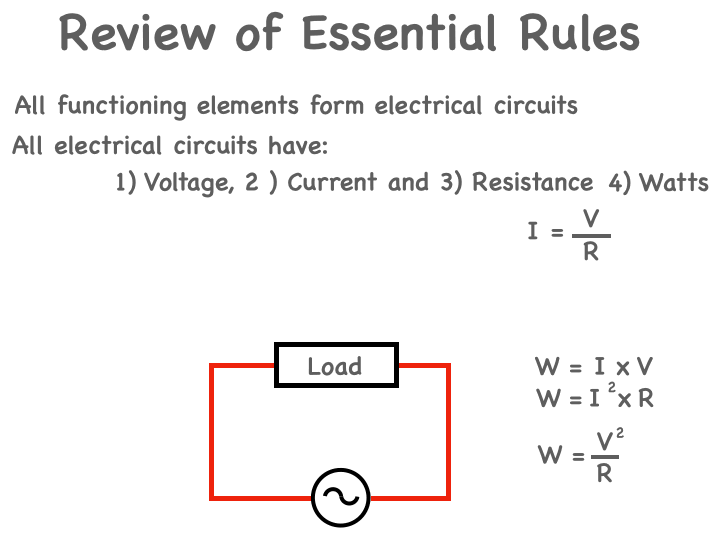Blog #11 - Basic Rules & Formulas
/This blog is designed to give, the “do-it-yourselfer”, an introduction to the low-voltage electrical wiring found in residential homes. Most of it applies to any installation that uses a 120/240 AC volt supply. Of course, there are numerous permutations and combinations involved, but this blog will explain the most used, and generally familiar to the public. It is designed around the National Electric Code, (NEC) but codes vary, depending on where you are in North America, and indeed, the world. As a disclaimer, I am going to say that some of the wiring and some of the statements may not apply to local electrical codes. In order to be sure, the reader should check with the local authorities first, prior to changing any wiring in their homes. At the very least, this blog will provide a starting point for the aspiring student.
Reviewing the Basic Rules of Electricity, I am going to start with direct current circuits, and then very quickly move to AC circuits which are the type that is found in residential homes. All direct current electrical elements form electric circuits, and current will flow from positive to negative in a circular fashion around a loop. All electric circuits have Voltage, Current and Resistance (For the present time we are going to consider only resistive loads for simplicity). These three quantities are related by Ohm's law. which states that the current in a circuit will very, directly as the voltage and inversely as the resistance in the circuit.
In this illustration, current will flow in a circuit formed by the wires connecting the battery through the lightbulb back to the battery. The voltage of the source equals the voltage drop across the lightbulb in this case and let's say, it was 120 Volts.
Of course, batteries don't operate household systems. It is AC current, which is changing polarities, 60 times a second. This illustration is showing what a lightbulb might look like if the polarities were changing at 1.6 times a second. As you can see, the oscillations are very visible. A fact which is not at all acceptable.
Now, if we speed up the AC source to 60 cycles a second, the filament in the lightbulb does not get a chance to cool in between the cycle changes, hence the light looks like it's on steady. which indeed it is. The use of AC is mainly because it allows for voltage transformation. That is, to be stepped up, and transferred over long distances, and then, stepped down, to lower levels, to make it useful, and safe within homes.
The book is one of a kind in that it teaches the concepts of basic electricity in a way that is clear, concise, and very easy to understand. It forms an excellent foundation for those who wish to proceed from the basics to more advanced topics.
Numerous illustrations are included to simplify learning both theories and their applications. Direct-current and alternating-current devices and circuits are explained in detail. Magnetism, as well as motors and generators are


























